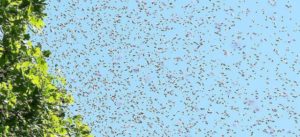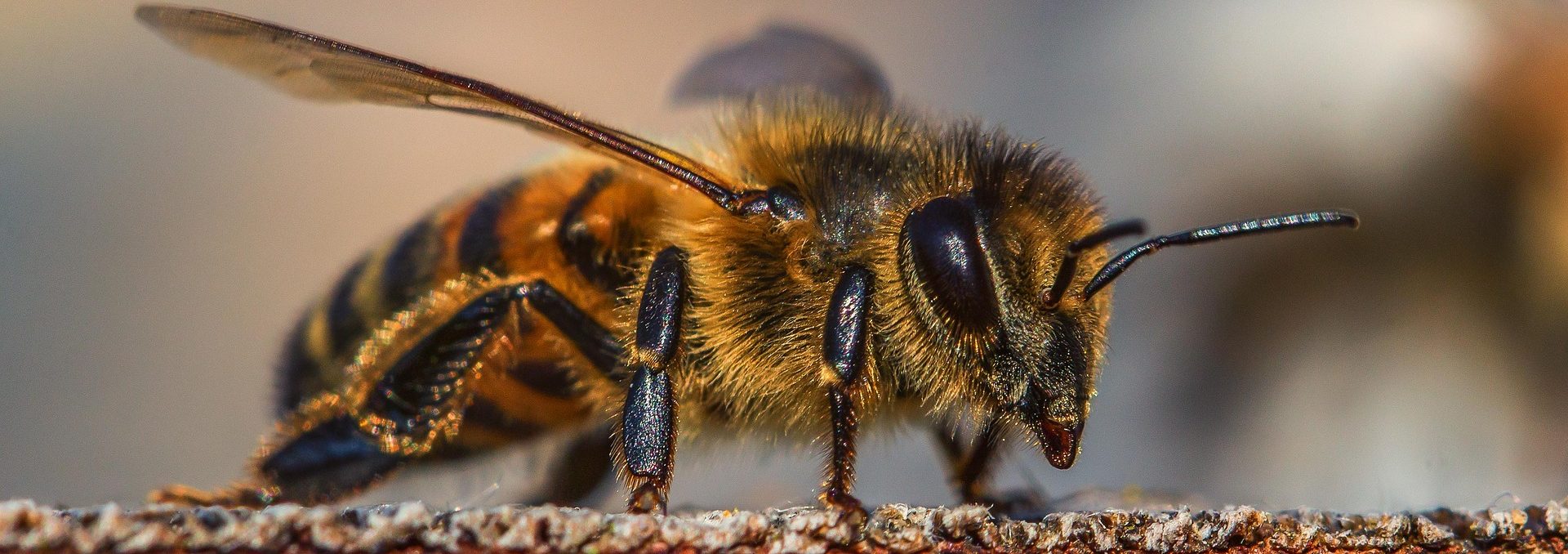
Swarm in Flight
BEE SWARMS Call 13 25 23
Qld Dept Agriculture, Fisheries and Forestry (QDAFF) can assist you with Bee Swarm enquiries
Mon, Tues, Wed, Fri 8.00am to 5.00pm Thursday 9.00am to 5.00pm
Email:callweb@daf.qld.gov.au
Web: http://www.daf.qld.gov.au/animal-industries/bees
Are swarms dangerous?
They are focused on finding a new home, not on attacking you. That said, it is important to keep your distance from swarming bees, because if the bees feel threatened, then it is possible they will sting.
A swarm may stay around for a few days, depending on how quickly the scout bees find a suitable new home. This could happen very quickly, even within a day. If however, you come across a bee swarm that really is too inconvenient to tolerate, firstly:
Do not attempt to move or destroy the swarm unless you know what you are doing. Such attempts could seriously backfire. Contact a swarm collector for advice about dealing with the swarm.
Swarming is the process by which a new honeybee colony is formed when the Queen bee leaves the colony with a large group of worker bees. Up to 60% of the worker bees leave the original hive location with the old Queen. This swarm can contain thousands to tens of thousands of bees. Swarming is mainly a spring phenomenon, but occasional swarms can happen throughout the warmer months. Secondary after-swarms may happen but are rare. After-swarms are usually smaller and are accompanied by one or more virgin Queens. Sometimes a beehive will swarm in succession until it is almost totally depleted of workers.
